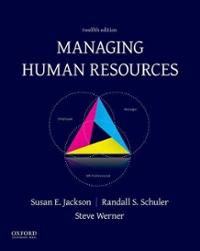pls solve all subquestions
Question B2 government is trying to figure out how climate change is going to affect the economic growth of the country and hires you as a consultant. The production function nction is given by Y = 2F(K, N), where K is capital Cod N is labour. As Usual, z is a measure of total factor productivity. The production function has all the Standard properties (constant returns to scale, marginal product of labour and capital is decreasing, etc.). consumers save a fraction s of their income and consume the rest. Capital accumulates according to K' = ( 1 + n )N. " (1 - d)K, where / is investment and d is the depreciation rate. The population evolves according to N' = The main effect of climate change is an increase in the temperatures, which affects the total factor productivity according to: z = , . T is an index measuring the temperature anomaly, i.e. how temperatures differ from the normal level. If T = 1, there is no anomaly. If T > 1, temperatures are higher than normal. The parameter a measures the level of technological progress, and it will be set to a = 1 for the moment. Assume that the population growth rate is n = 0 and the depreciation rate is d = 1. a) Derive the equation describing how capital per worker changes over time, assuming there is no temperature anomaly (7 = 1). Illustrate in a diagram how capital per worker evolves over time. Show that in the steady state we have sf (k*) = k*, where f(k) = F (N, 1). Use a diagram to explain how the steady state is determined. (7 points) b) Assume that we are in the steady state described in question a. What happens to the steady state if T increases? Show in a diagram how the steady state will change. What will happen to the growth rate of capital per worker after the increase in T? Use a diagram to illustrate how the growth rate of capital per worker evolves over time. (7 points) c) What is the growth rate of the aggregate capital K in the steady state? Explain. (5 points) 2 . The growth in temperatures and technology is in fact sustained over time. A colleague at LSE has estimated that a and T follow these evolution equations: a' = (1+ ga)a T' = (1 + gr)T Depending on the values of ga and gr, what are your predictions for the living standards of this economy in the long run? (5 points) e) Another colleague at LSE has a different theory: temperatures are increasing because of higher emissions of CO2 in the atmosphere due to the production process, and tighter regulation can reduce these emissions. Assume that a = 1 and constant. Also assume that T = 1 + yf (k), i.e. the temperature anomaly is higher if output per capita is higher. The parameter y is a number between 0 and 1 and tells you how restrictive the regulations are (lower y implies stricter regulations, therefore reducing the temperature anomaly). What is the optimal value for y if we want to maximize the living standards in steady state? Explain. (5 points) f) Assume that there is a cost on aggregate output of (1 - y) N for regulation to be implemented. In other words, a part of the output produced is going to be lost and the income-expenditure identity will be C + 1 = Y - (1 - y)N. How would your answer to question e) change? [Hint: we are not looking for a mathematical proof of what the optimal y should be! You could for example show how the equation characterizing the steady state changes, and explain why the solution found for y in the previous question is not optimal anymorel (6 points)







